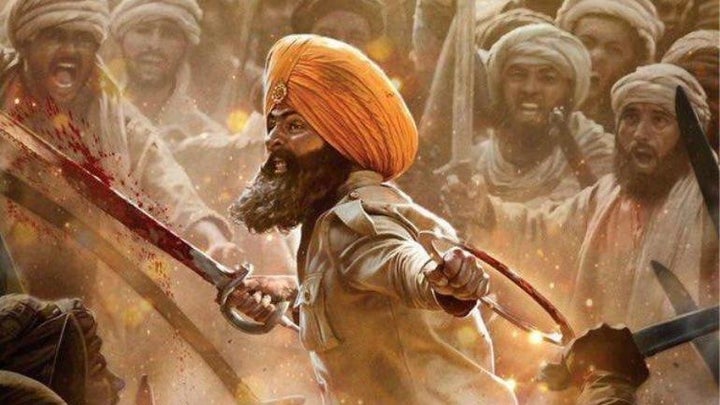
It’s that time of the year when Akshay Kumar, he of the famous Canadian passport, feels the bi-annual urge to prove his love for the nation.
In Anurag Singh’s Kesari, Kumar, is a turbaned soldier working under the British payroll, but somehow fighting for India’s azaadi.
Inspired by the true story of the battle of Saragarhi, 1897, where a band of 21 soldiers of the British Indian Army’s 36th Sikh Regiment warded off 10,000 Pathan troops, Kesari takes a valiant real-life story and morphs it into a jingoistic drama using banal, dated storytelling techniques.
First, it’s never clear if Parineeti Chopra is an existing wife who died before Kumar, or only a fantasy-wife. She keeps emerging mysteriously and has absolutely nothing to contribute other than a few unbearably sappy lines here and there for comic and romantic relief.
Second, the first half of the movie is entirely unnecessary. Kumar is transferred from a key outpost to Saragarhi (which was considered so inconsequential they called it a post-office). Once there, he spends considerable time building camaraderie with the soldiers, who are unruly and brash. The lines here are dull, lack wit or spirit, and do absolutely nothing to explore the humanity or the psyche of men on the brink of potential war.
Even when the battle finally erupts, a series of strange things occur. A soldier breaks into a song, the characters talk to one another in twisted metaphors, and all this while, we are supposed to believe that the bloodthirsty Pathans are patiently waiting outdoors.
And like every good patriotic movie that reminds you of solider sacrifice, every character first dies, then springs to life to blurt out super emo final words.
Singh, who’s known to make Punjabi blockbusters such as Jatt and Juliet and Disco Singh, has a very 90s filmmaking style. There’s absolutely no subtlety here (there’s literally a drum battle between Afghan Pathans and Indian Sikhs where Kumar’s single dhol manages to silence the sound of of the 100 others.)
The battle of Saragarhi was important and it is worth remembering but Kesari is a blatant subversion of a historic act which serves a specific ideology by feeding into the current nationalistic narrative of fetishising violence and celebrating war.
As a wave of Islamaphobia engulfs the world, let alone India, troubling imagery and colours - of saffron-clad righteous Sikhs getting brutally slaughtered by the cold-blooded, barbaric, black-flag brandishing Muslims - falls precisely within Hindutva’s ideological cannon.
The Muslim characters in the movie get absolutely no nuance, they are blood-lusting Muslims out to ravage the noble, almost secular Sikhs.
Kumar’s Ishar Singh is so noble, he asks one of his troupe member (the solitary good Pathan, for safe measure) to ensure he gives water to injured soldiers on both sides of the battle.
In an earlier scene, he helps in building a mosque in a nearby village and enlists the others to chip in.
And how do the Afghans respond?
In the climactic battle, which is a visually exhausting, emotionally taxing and heavily monotonous sequence to sit through, Kumar is about to slaughter a young Pathan, who looks no more than 18. He lets him go, even saying ‘oh, you’re a kid’.
Moments later, it’s the same kid, who goes on to fatally stab Kumar.
Nice.
For a film with a UA certificate the film is very, very violent.
As if the fact that 10,000 Pathans are taking over 21 Sikh soldiers wasn’t enough to show the former in terrible light, a visual of an Indian solider being stabbed by 10-15 swords lingers on to ensure that the demonic methods of the Muslims aren’t missed.
These scenes, weaved in before and during the war, only heighten the contrast between two communities and sends out a deeply polarising message at a difficult time in global politics, where majoritarian forces are ripping apart our secular fabric.
Kesari (which translates to Saffron, also happens to be the colour of the ruling party), could’ve made for a nail-biting war-drama had it not chosen to paint the war in such broad strokes and made an attempt to humanise it.
But the film’s visual grammar reveals its politics and the politics are woefully troubling ― this is an exploitative drama that cashes in on an existing populist sentiment at a time when we should be containing the hate, not fuelling it.